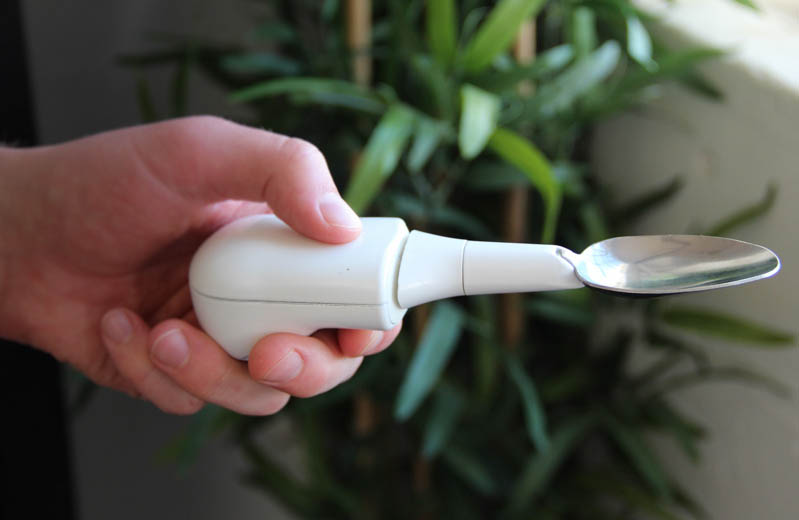
A technology editor at The Atlantic asked me to comment for their story on the Lift Ware spoon, a piece of sensing cutlery that eliminates up to 70% of a user's hand tremor effect, making a smoother and easier passage from plate to mouth. The tool is bifurcated in the middle, so the back end can receive, sense, and respond to tremor, while the front end is stabilized.
Sara Hendren, an artist and researcher who runs Abler, a site devoted to adaptive technologies and prosthetics, likened the Lift Ware spoon to an "edit" of more familiar flatware. "This kind of 'edit' extends self-feeding for its user," she wrote to me over email, "and maintaining that kind of autonomy can be very significant to one's own self-perception and the perceptions of others. After all, the experience of change in a person's ability is registered as much in these qualitative ways as it is in hearing the results of lab tests."
In a sense, all technologies are "assistive" technologies -- eating hot soup with one's bare hands does not sound particularly effective, nor pleasant. We have invented spoons to extend our limited abilities.
The Lift Ware spoon extends that reasoning to be yet more inclusive. And that sort of thinking can be fruitful for designers and inventors. "Constraints are always generative for designers," Hendren said, "and this set of constraints—digging deeply into all kinds of atypicalities, less visible conditions, psycho-social challenges, and the many varied experiences of aging—is a still largely untapped area of design research and development. This example of the spoon might yield further consideration of cutlery altogether. Cultures already use different implements for eating. Why not re-examine cutlery entirely?"
I'm glad they agree that all tech is assistive tech. Video below, demonstrating several users with hand tremors struggling with typical spoons, and then with the Lift Ware model, which seems to show a lot of improvement.
[youtube=http://www.youtube.com/watch?v=fS01kn6YJ94&w=420&h=315]